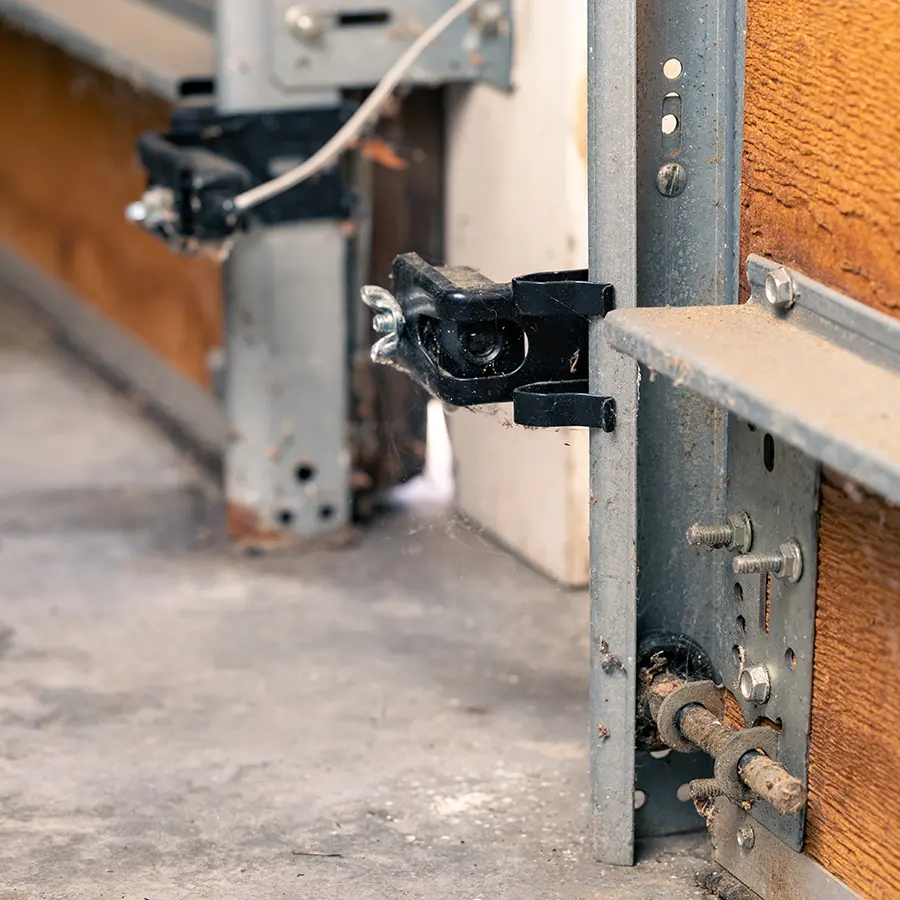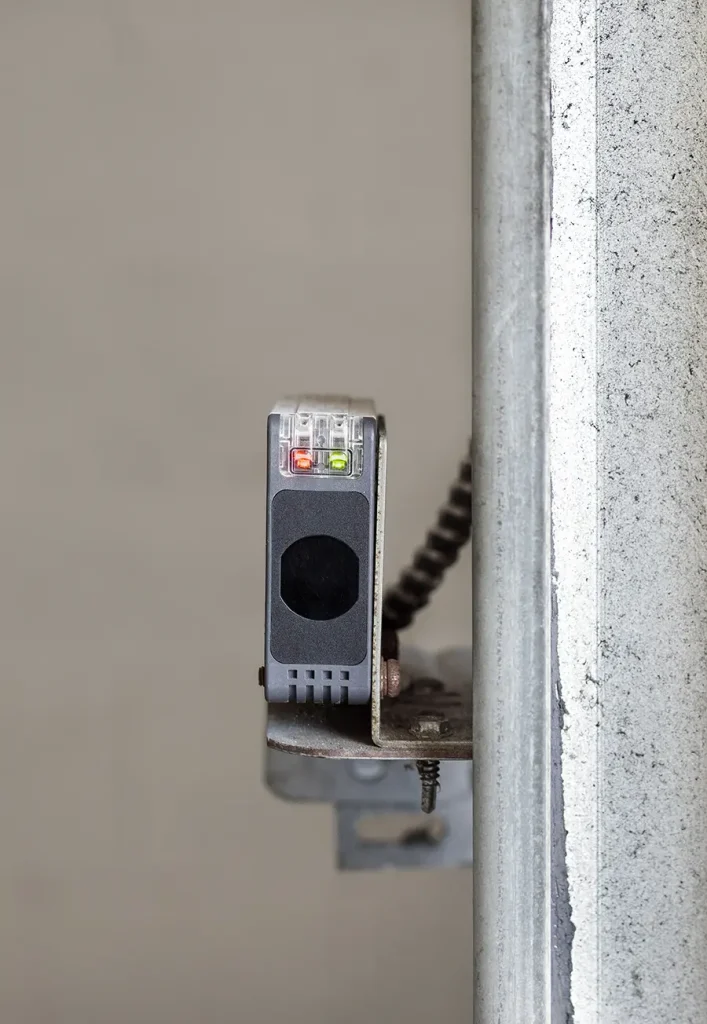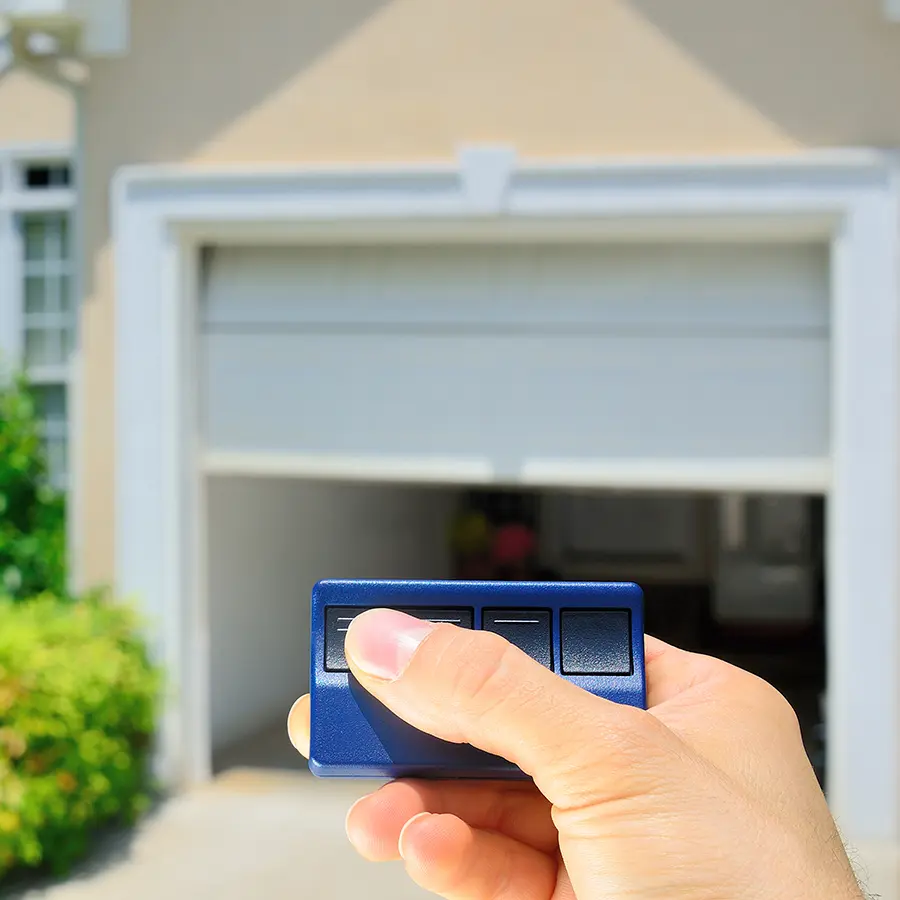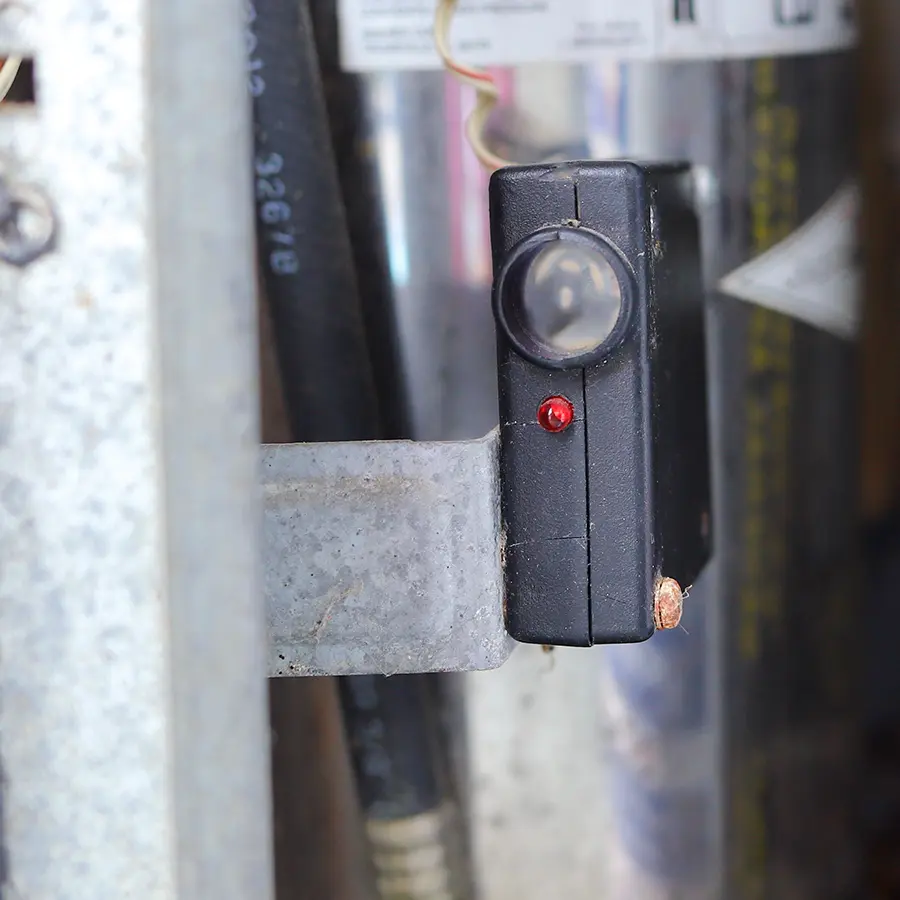
Garage Door Sensors
Ensure your garage door operates smoothly & safely
Behind the simple push of a button to open your garage door lies a complex system of components and safety features that ensure reliable operation. At Dynamic Garage Doors, we specialize in diagnosing and repairing issues such as misaligned safety sensors, faulty parts, and connectivity problems. Whether it’s recalibrating sensors, replacing damaged components, or restoring smart system connections, our expert technicians ensure your garage door operates smoothly, safely, and intelligently every time. Whether it’s recalibrating sensors, replacing faulty parts, or restoring smart system connections, our expert technicians ensure your garage door operates smoothly, safely, and intelligently every time.

History of Garage Door Sensors
Garage doors have become a primary entry point for many homes, making their safety features more important than ever. Garage door sensors, commonly referred to as photo-eyes, utilize infrared beams to detect obstructions. One sensor emits the beam while the other receives it, creating a safety mechanism that prevents the door from closing if the beam is interrupted.
In response to safety concerns, the Consumer Product Safety Improvement Act of 1990 mandated that all automatic residential garage door openers manufactured after January 1, 2003, include these electric eye sensors. These sensors either detect objects in the door’s path or require a person to press and hold a wall-mounted control button to close the door.
Garage Door Safety Sensors
Safety sensors play a crucial role in keeping garage doors safe and reliable. Mounted a few inches above the floor on each side of the door, they project an invisible beam across the opening. If anything interrupts that beam, whether it is a child running by, a pet resting in the doorway, or an object left behind, the door instantly stops and reverses. This simple feature has become standard on modern garage doors because it prevents serious accidents and gives homeowners peace of mind that their door will only close when the path is clear. By protecting both your family and your property, safety sensors are one of the most important parts of a garage door system.
When safety sensors malfunction, the whole system can be affected. Misaligned sensors may cause your garage door to stop closing altogether, faulty wiring can make them unreliable, and dirt or debris on the lens can interfere with their signal. At Dynamic Garage Doors, we understand how frustrating this can be and how important it is to restore safe operation quickly. Our team can troubleshoot issues, clean and realign sensors, repair connections, or replace damaged components when needed. With professional care, your garage door will continue to open and close smoothly while maintaining the safety and reliability your household depends on every day.


Common Garage Door Sensor Issues and Fixes
Garage door sensors are essential for ensuring the safety of your garage door system and are generally easy to maintain. Most systems include two lights: a red light (the transmitter) and a green light (the receiver). When these sensors stop working correctly, it’s often due to one of the following common issues:
Dirty Lenses
Photo-eye sensors function like small cameras. Positioned close to the ground, they are easily exposed to dust, dirt, cobwebs, or fallen leaves blocking the infrared beam. When this happens, the receiver typically blinks to indicate the presence of an obstruction. Gently clean the sensor lenses using a soft cloth and mild soap. Avoid abrasive materials scratching the surface. This quick maintenance step often restores full functionality.
Misalignment
Sensors must face each other precisely to communicate effectively. If they’re bumped by trash bins, pets, or lawn equipment, they can shift out of alignment. A blinking green light usually signals this problem. Check that both sensors are pointing directly at each other. Loosen the mounting brackets slightly, adjust the sensors to proper alignment, and retighten them. You may need to bend the brackets slightly if they’ve been knocked out of place.
Damaged or Disconnected Wiring
If neither sensor light is illuminated, it could indicate a power or wiring issue. Worn or damaged wires, whether due to weather, pests, or age, can disrupt the system, rendering the sensors non-functional. Wiring issues are more complex and usually require professional attention. In many cases, the wires or sensors will need to be replaced. Contact Dynamic Garage Doors for expert repairs with 24/7 emergency service available. Our team will get your system working safely and efficiently.
Expert Garage Door Sensor Repair
At Dynamic Garage Doors, we specialize in the installation, maintenance, and repair of garage door sensors. Whether your sensors are malfunctioning, misaligned, or simply due for a routine check, our expert technicians are just a phone call away. Garage door safety isn’t optional; it’s essential. Properly functioning sensors help prevent injuries, protect your property, and provide peace of mind every time your door opens and closes. Don’t take chances with faulty equipment. If you need fast, reliable service, day or night, contact Dynamic Garage Doors for professional support you can trust.
